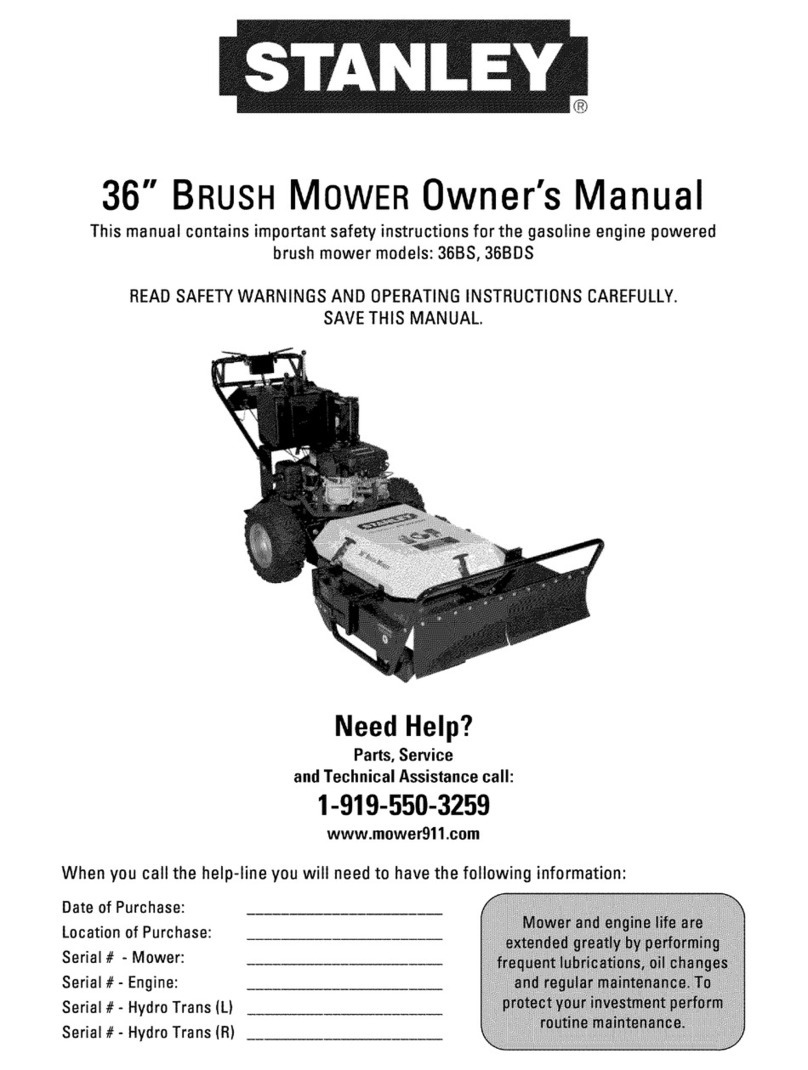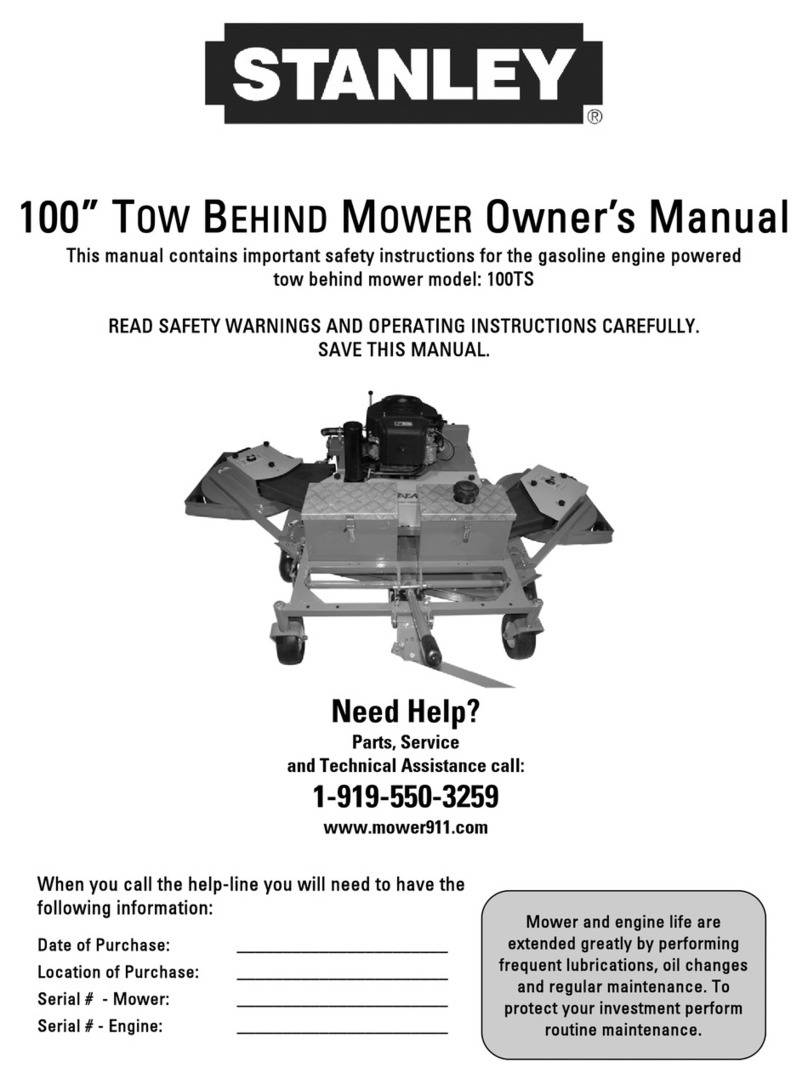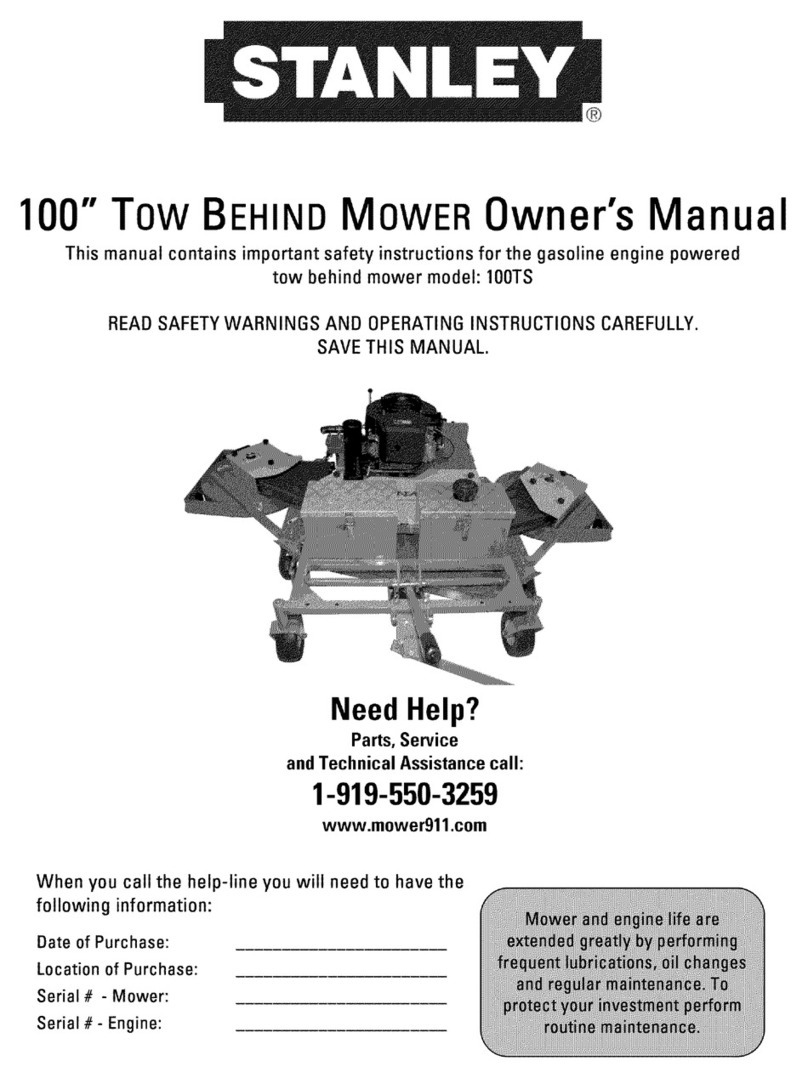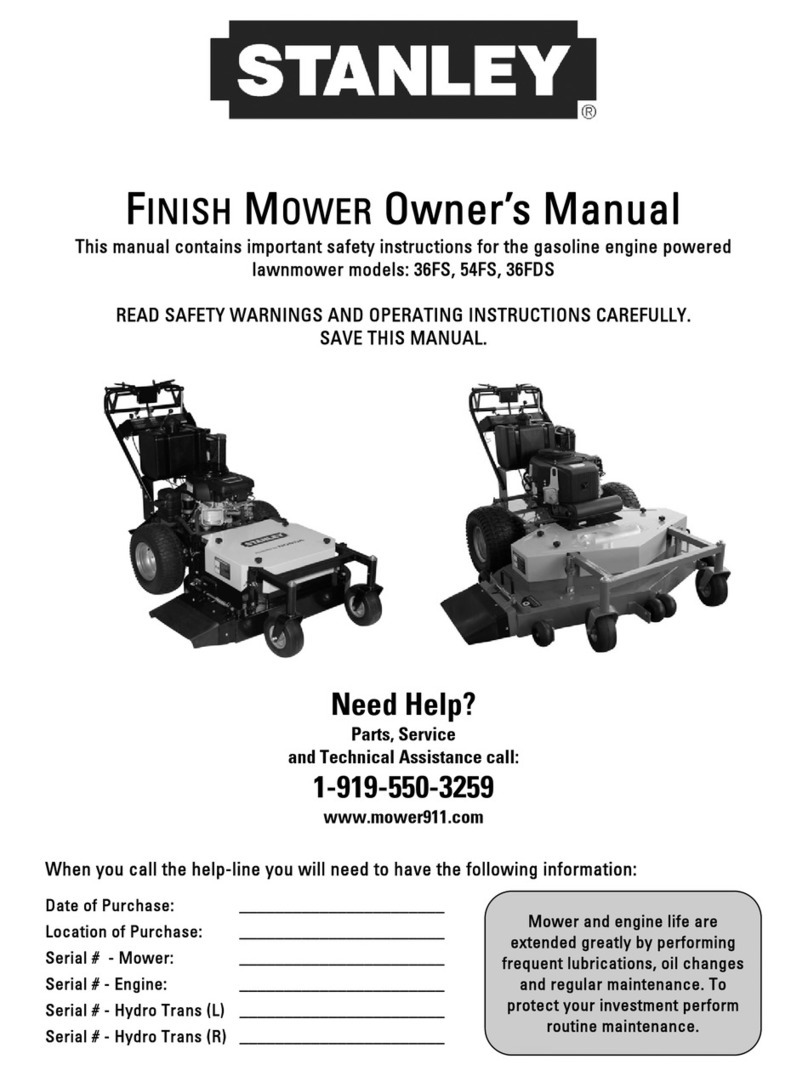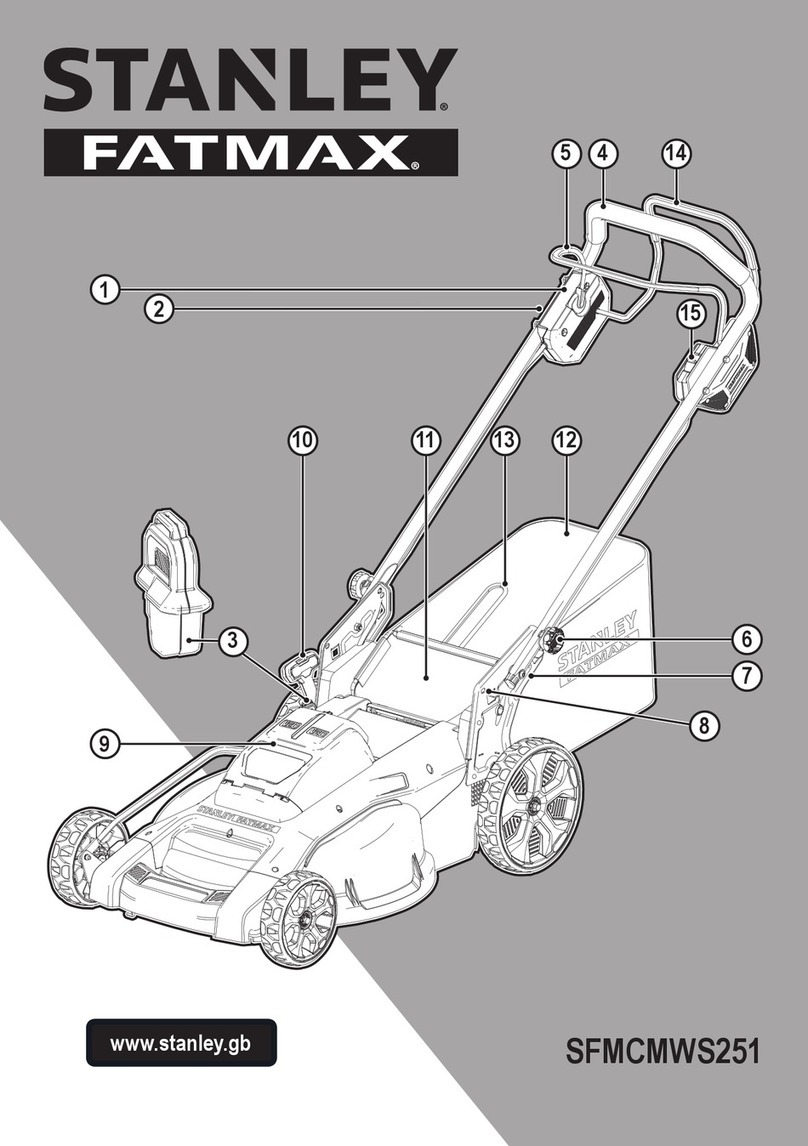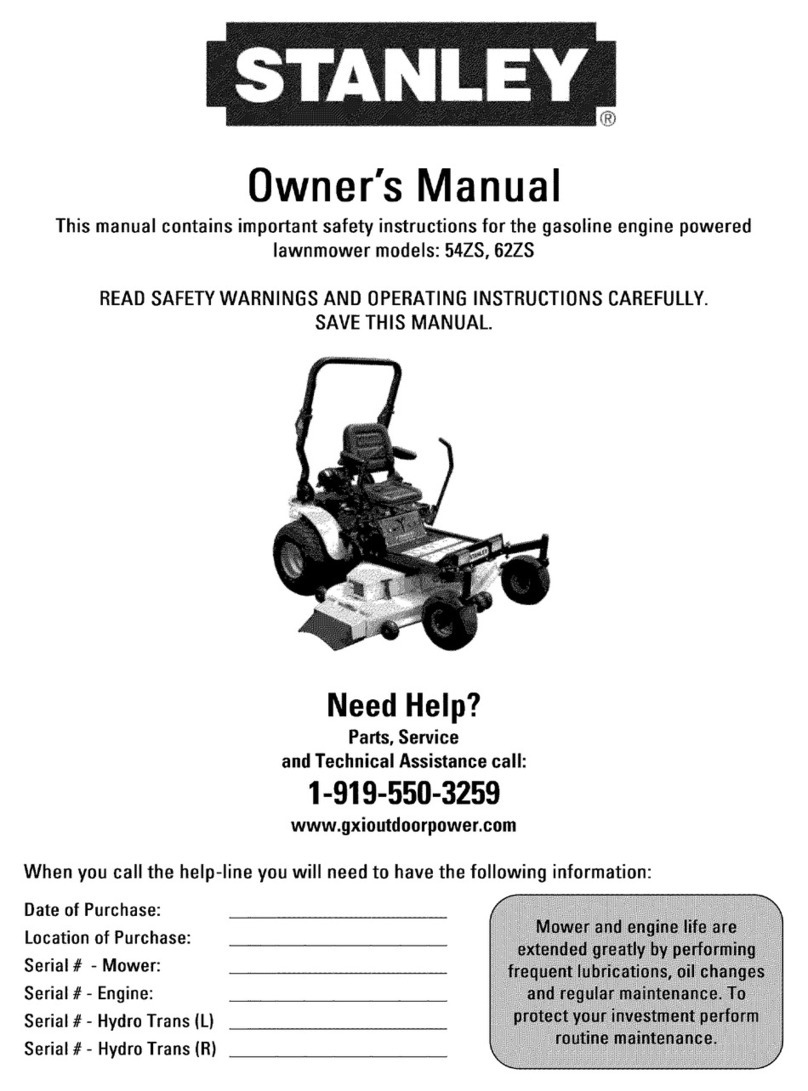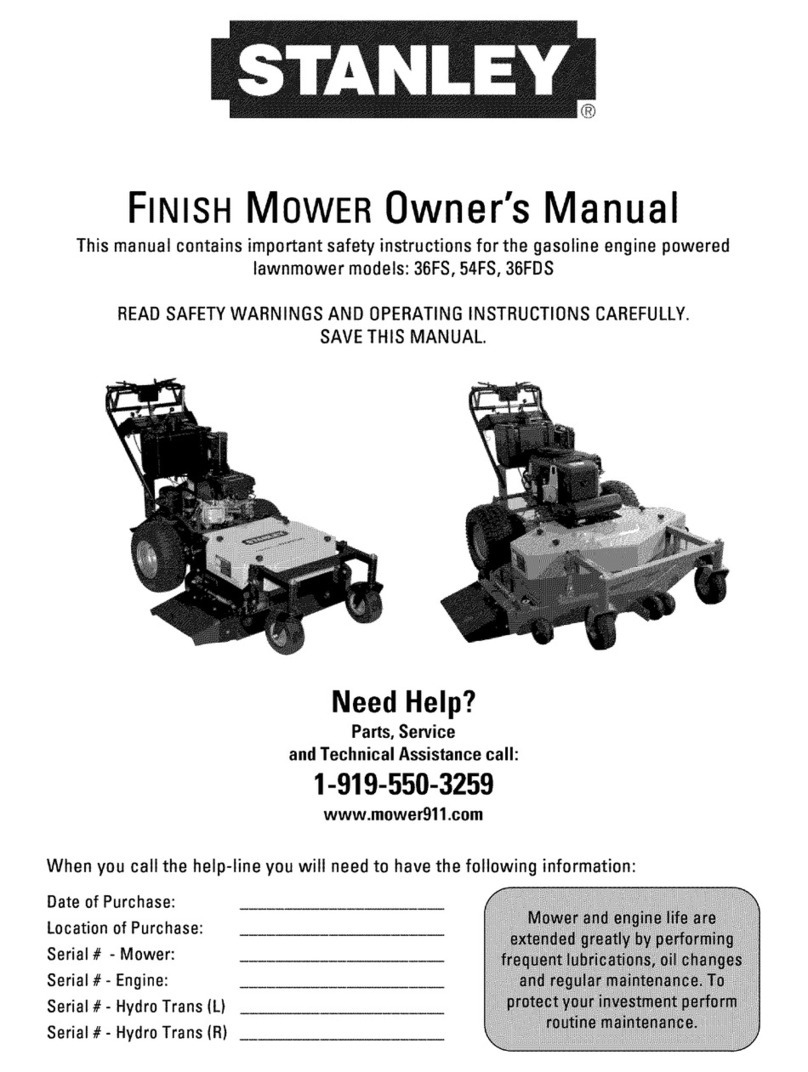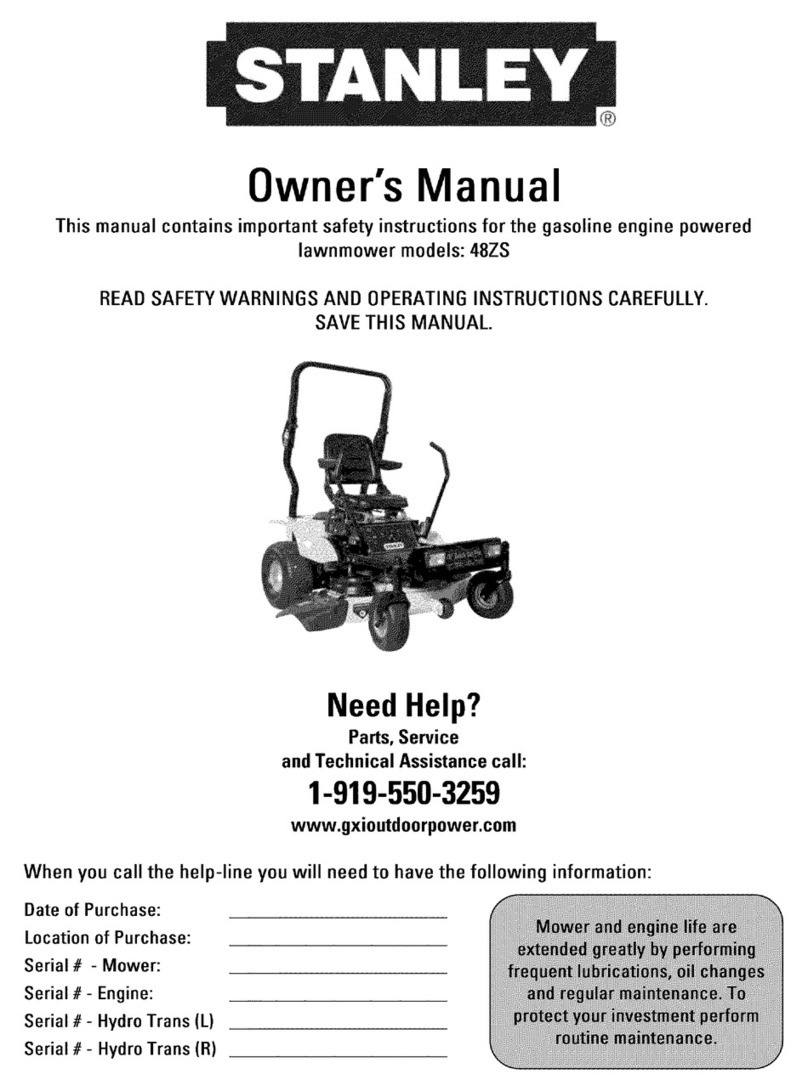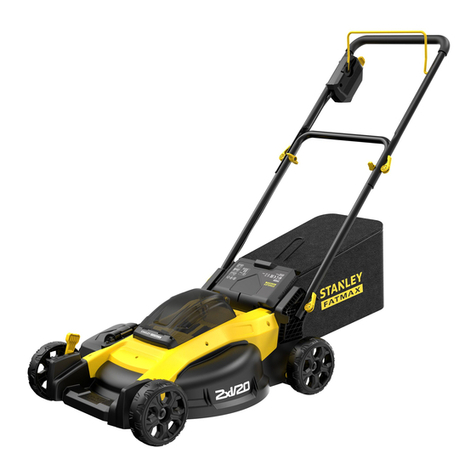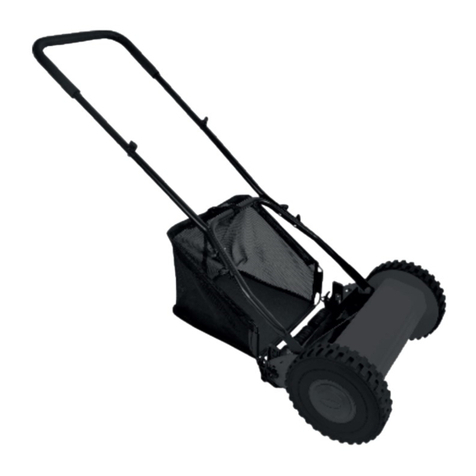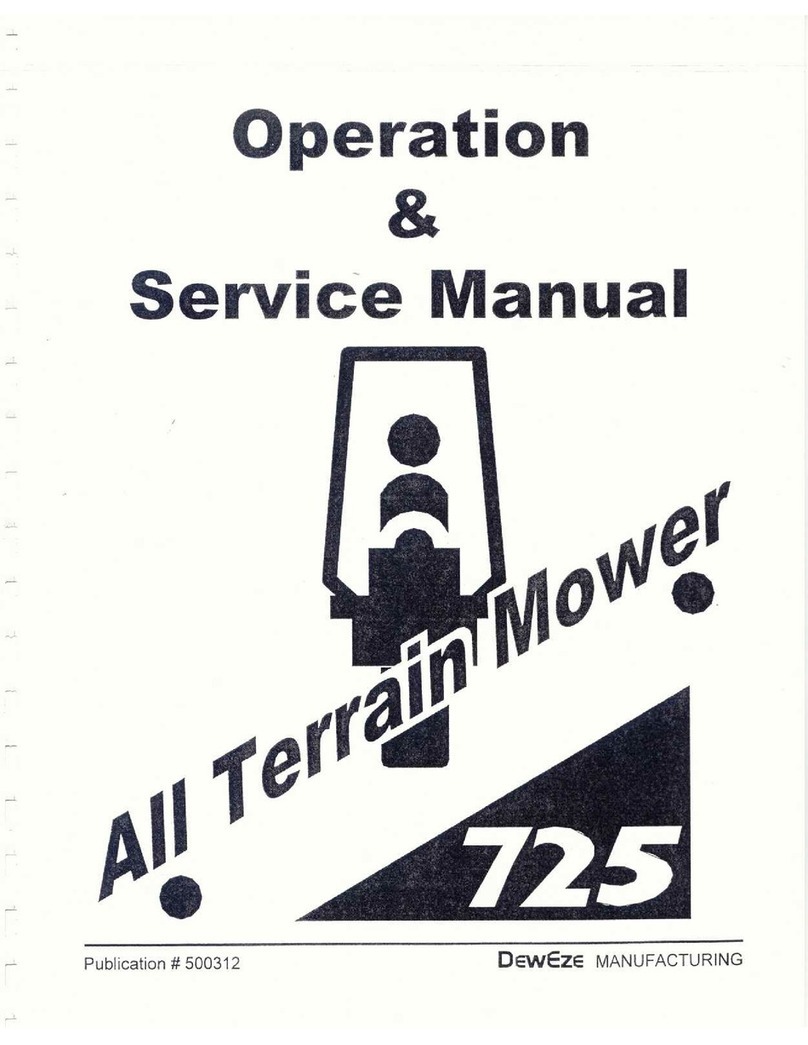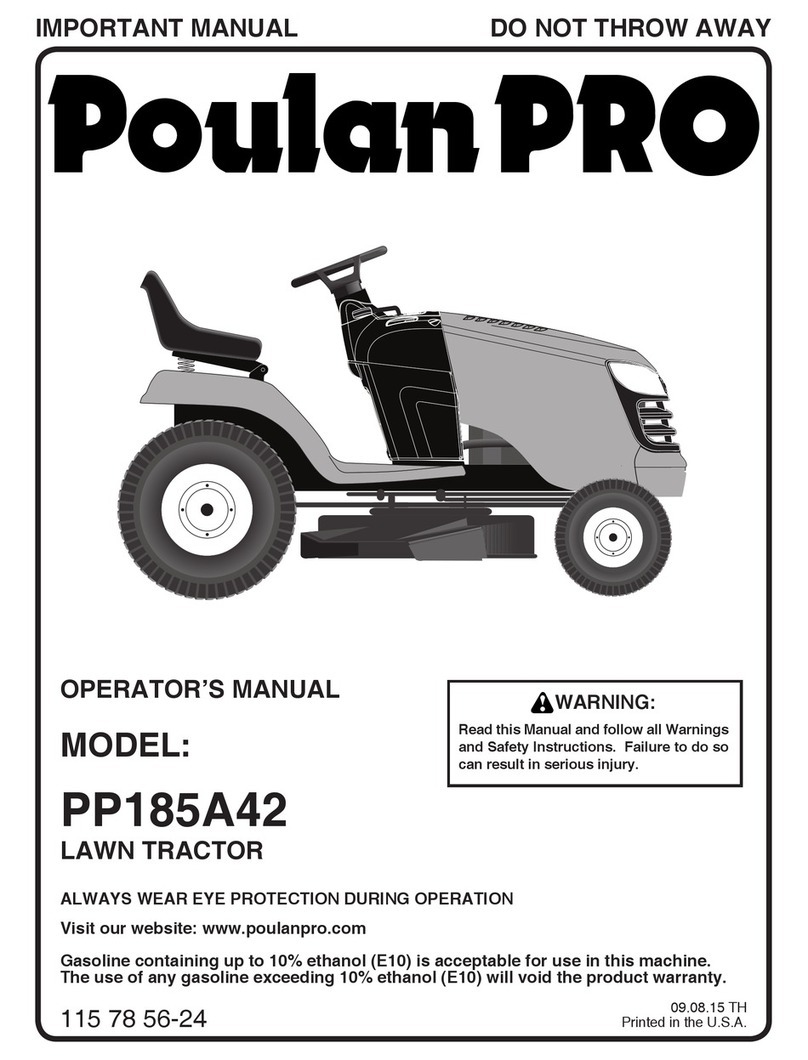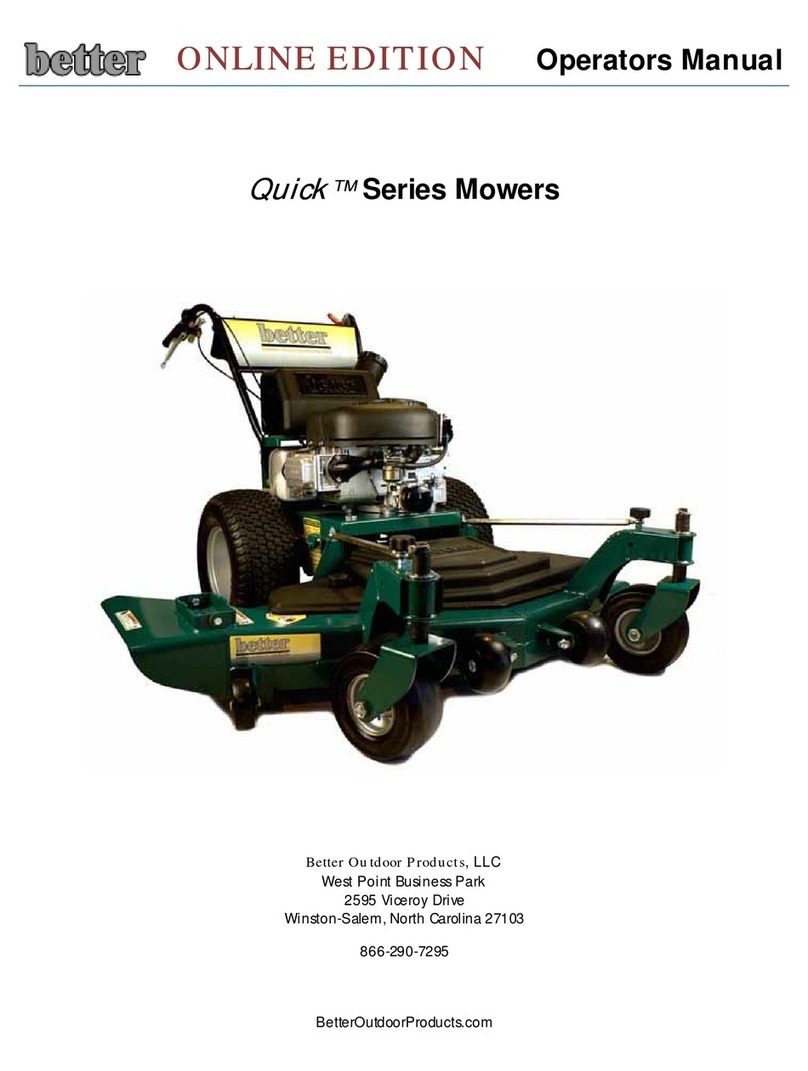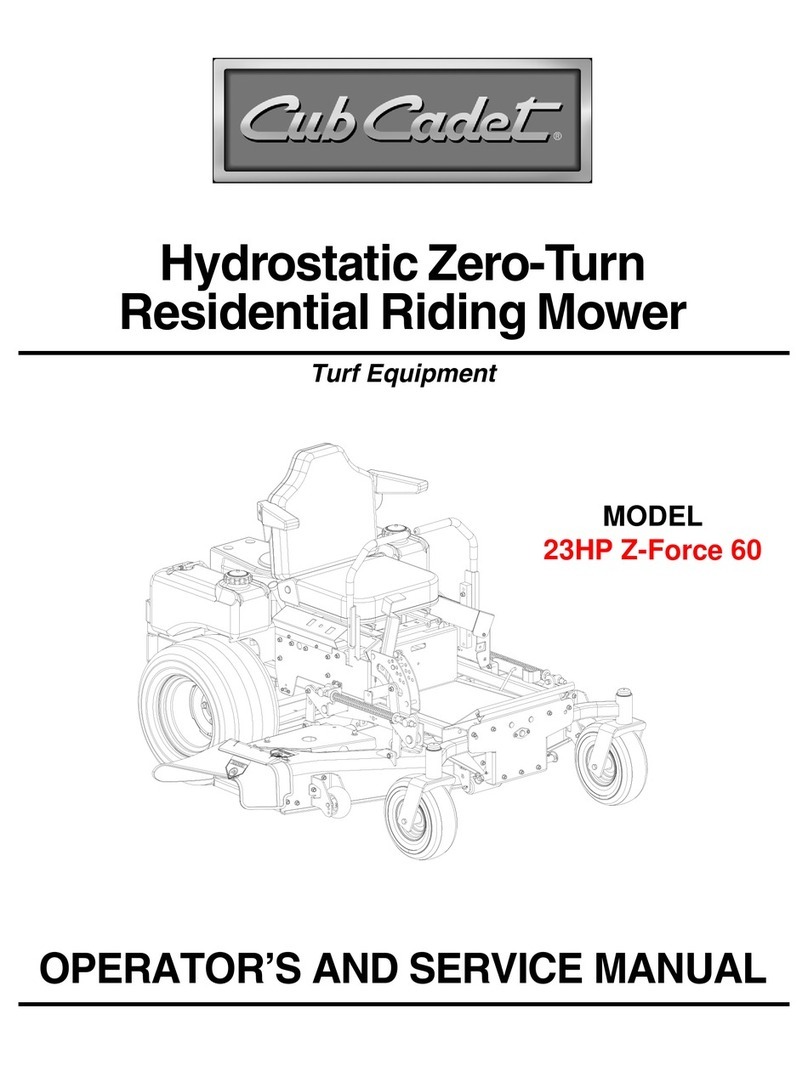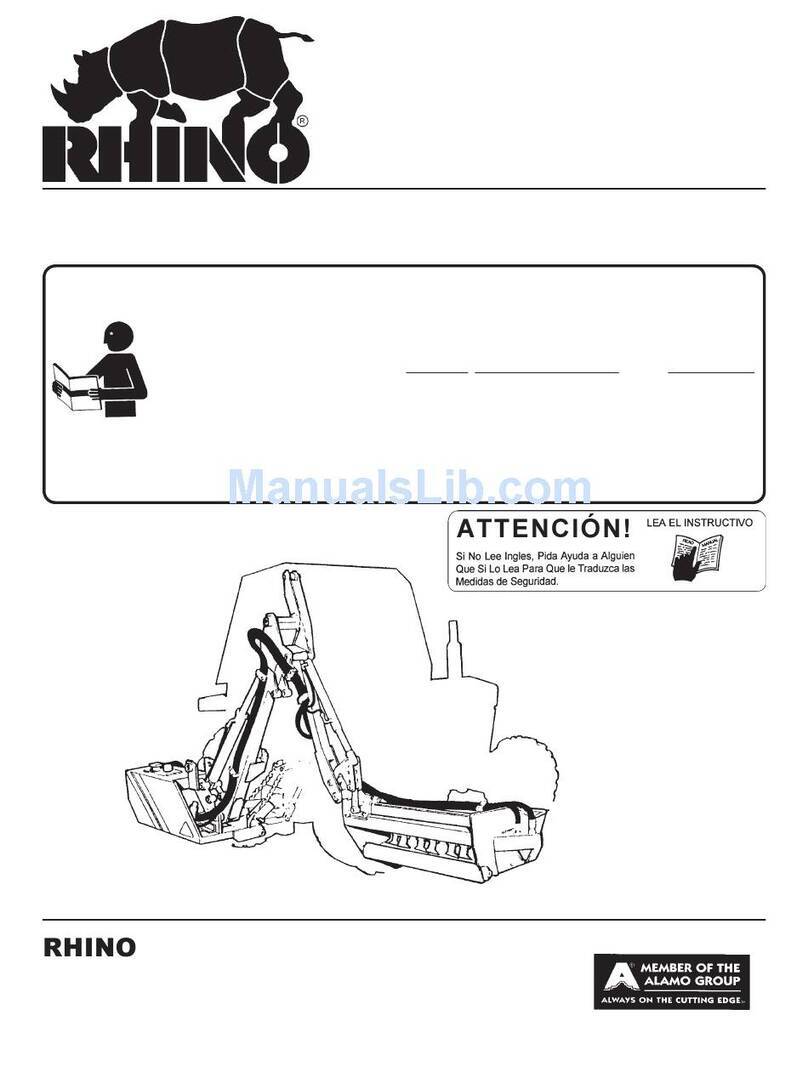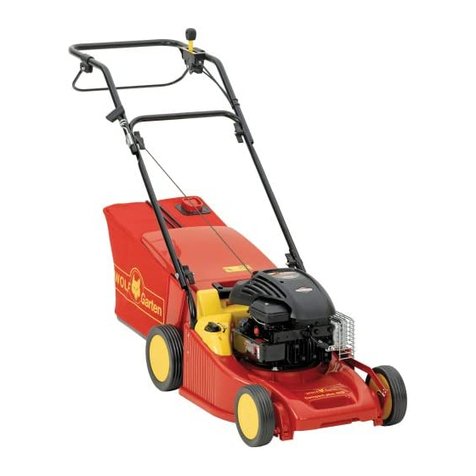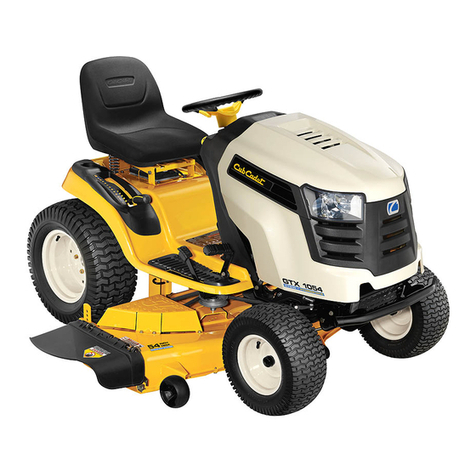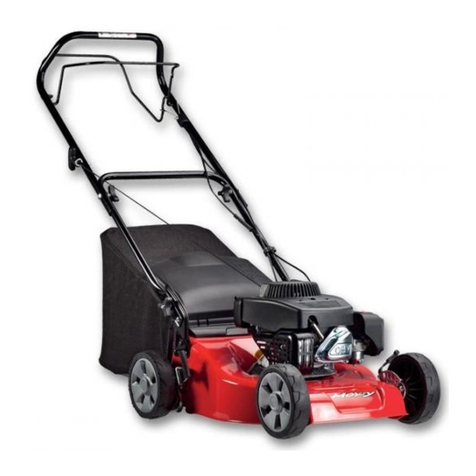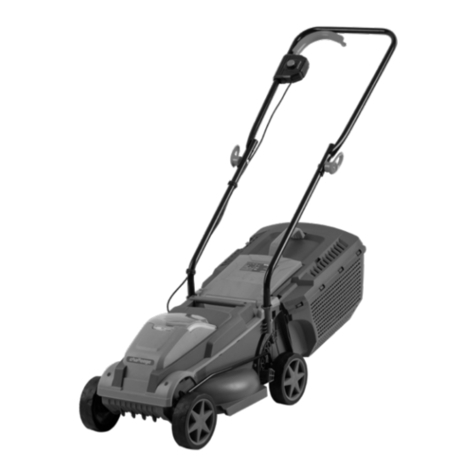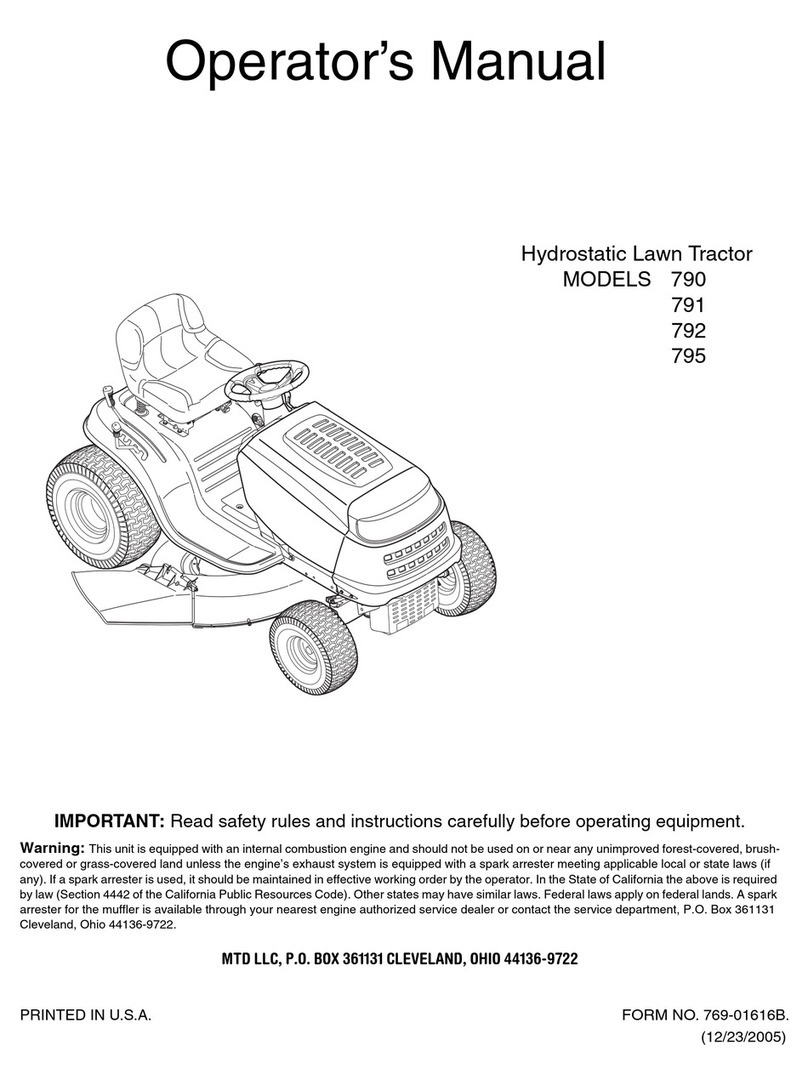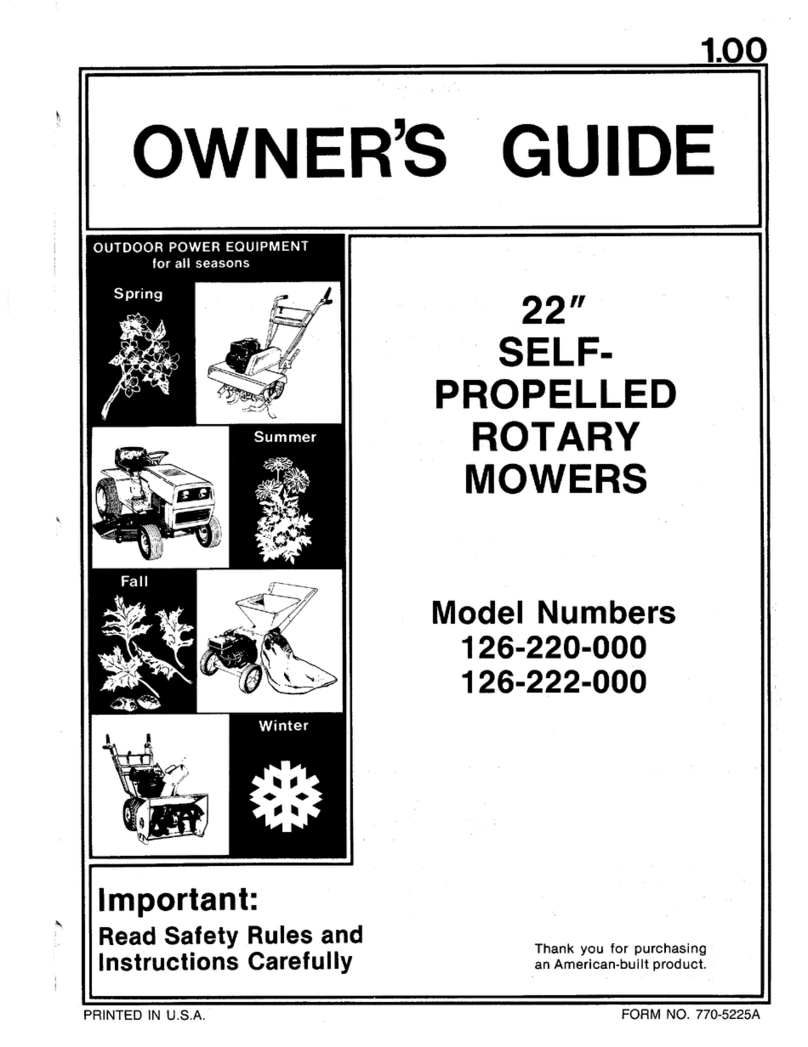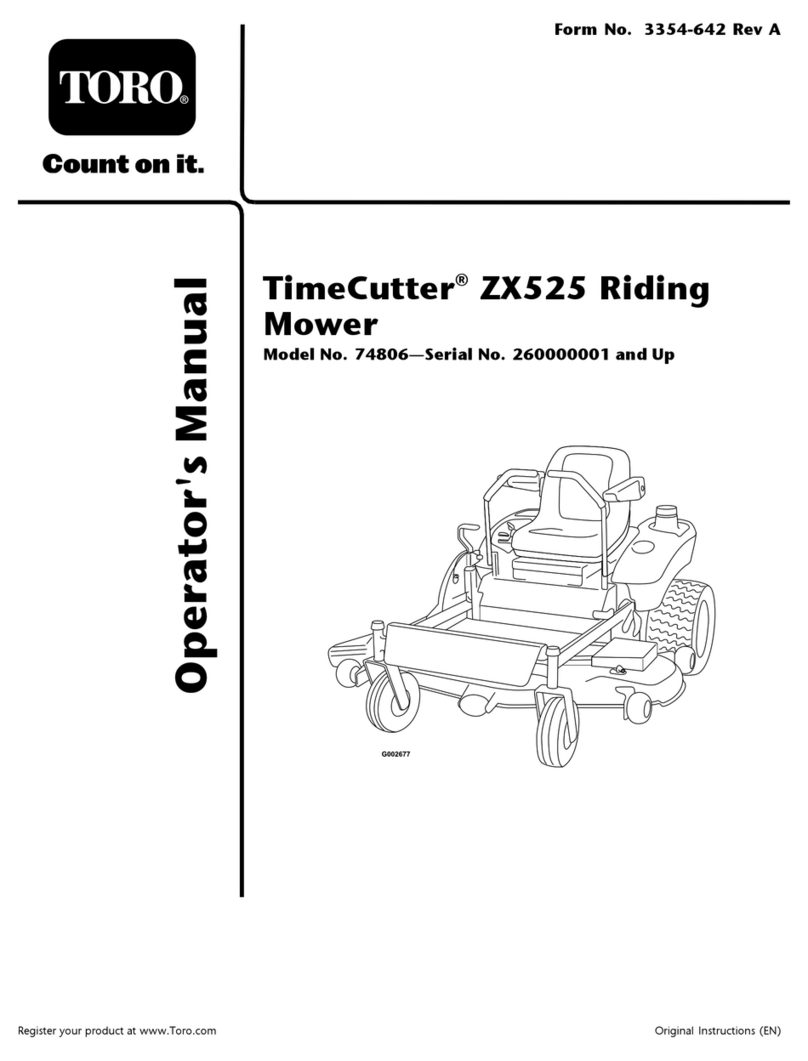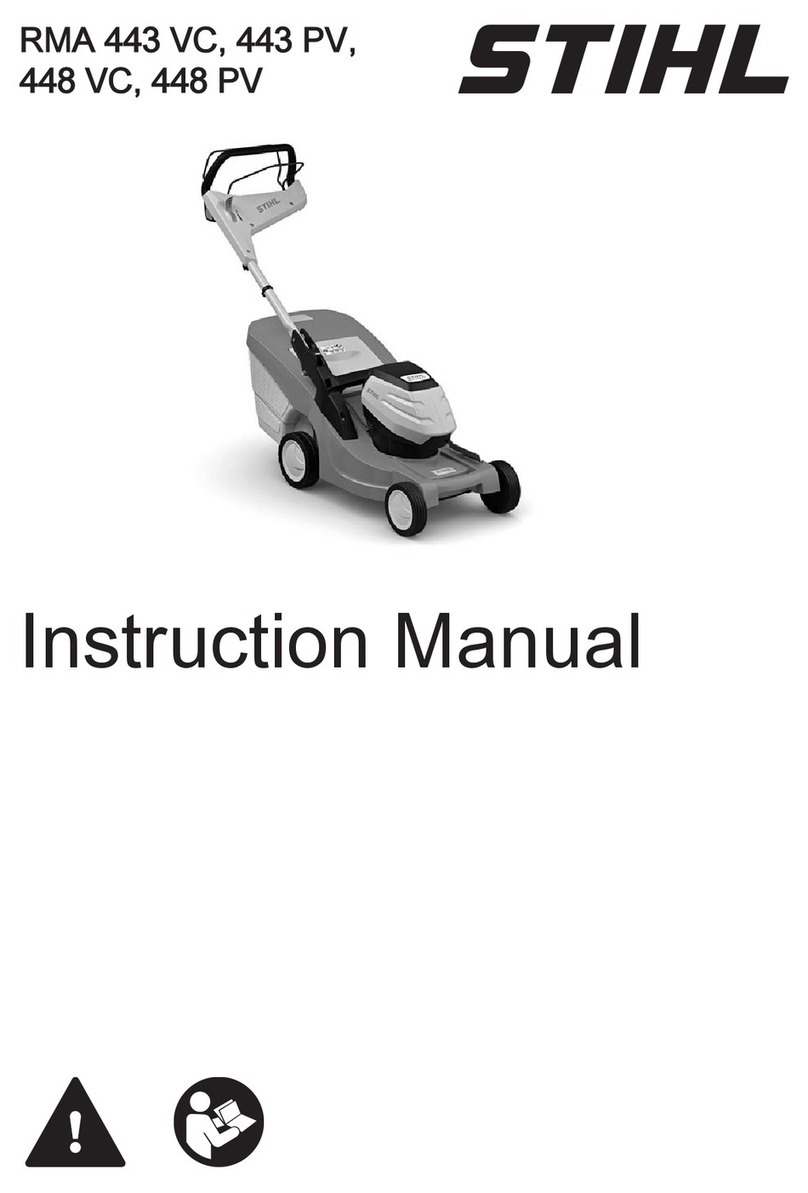
GB
9
F–030601L
CONTENTS
OWNER’S INFORMATION 9
INTERNATIONAL PICTORIALS 10
SAFE MOWING GUIDE 12
STEPS TO FOLLOW 14
ASSEMBLY 15
OPERATION 17
MAINTENANCE 20
TROUBLE SHOOTING CHART 24
HOW TO ORDER REPAIR PARTS 25
CENTRAL PARTS DISTRIBUTORS 25
SLOPE GUIDE 26
STANLEY OUTDOOR POWER
EQUIPMENT WARRANTY
Stanley Outdoor Power Equipment warrants to
the original purchaser that this unit shall be free
from defects in material and workmanship under
normal use and service for a period of Two (2)
Years from the date of purchase. Engines,
transmissions, and transaxles have an additional
warranty that is included in the literature kit.
Accessories (such as snow blowers, snow
blades, grass baggers, mulch kits, and
gardening attachments) are covered by a
separate warranty.
Normal wear parts and batteries are not covered
by this warranty except as noted below.
In the event the battery proves defective within
ninety (90) days from the date of purchase, we
will replace it without charge.
Normal Wear Parts are defined as belts, blades,
blade adapters, bushings, bearings, pneumatic
tires, headlights and seat covers. These parts
are warranted to be free from defects in material
and workmanship as delivered with the product.
Any claim for repair or replacement of normal
wear parts must be made within thirty (30) days
of the date of purchase. No claims involving
damage caused from material use, abuse, or
misuse will be honored.
Subject to the terms and conditions noted in this
Limited Warranty, we shall, at our option, repair
or replace at no cost to the original purchaser
any part covered by this Limited Warranty during
the applicable warranty period.
This Stanley Outdoor Power Equipment Two (2)
Year Limited Warranty is your exclusive remedy;
however this warranty is void or does not apply
to any unit that has been tampered with, altered,
abused, misused, or used for rental, commercial
and/or professional (non–homeowner) uses.
Your warranty does not cover minor mechanical
adjustments that are not due to any defect in
material or workmanship. For assistance in
making such adjustments, consult your
Instruction Book.
To make a claim under this Stanley Outdoor
Power Equipment Two (2) Year Limited
Warranty, take the unit (or if authorized in
advance, the defective part) along with your
proof of purchase to an Authorized Stanley
Power Equipment Service Center. To locate
your nearest Service Center, contact the retailer
where purchased, call either the Central Parts
Distributor for your area shown in the Instruction
book, or Stanley Outdoor Power Equipment
Customer Service at the number below, or
search our web site at
www.stanleylawnmower.com.
This Stanley Outdoor Power Equipment Two (2)
year Limited Warranty gives you specific legal
rights, and you may also have other rights which
vary from state to state. This Limited Warranty
is given in lieu of all other expressed and implied
warranties including the implied warranty of
merchantability and warranty of fitness for a
particular purpose. If you need additional
information on this written warranty or
assistance in obtaining service, call, write, or
e–mail at:
Stanley Outdoor Power Equipment
Customer Service Department
PO Box 268
Brentwood, TN 37024–0268
1–800–788–7766
www.stanleylawnmowers.com
OWNER’S INFORMATION
This instruction book is written for a person with
some mechanical ability. Like most service
books, not all the steps are described. Steps on
how to loosen or tighten fasteners are steps
anyone can follow with some mechanical ability.
Read and follow these instructions before you
use the unit.
Know your product: If you understand the unit
and how the unit operates, you will get the best
performance. As you read this manual, compare
the illustrations to the unit. Learn the location
and the function of the controls. To help prevent
an accident, follow the operating instructions
and the safety rules. Keep this manual for future
reference.
IMPORTANT: Many units are not assembled
and are sold in cartons. It is the responsibility of
the owner to make sure the assembly instruc-
tions in this manual are exactly followed. Other
units are purchased in an assembled condition.
On assembled units, it is the responsibility of the
owner to make sure the unit is correctly as-
sembled. The owner must carefully check the
unit according to the instructions in this manual
before it is first used.
WARNING: Look for this symbol to indicate
important safety precautions. This symbol
indicates: “Attention! Become Alert! Your
Safety Is At Risk.”
Responsibility Of The Owner
The responsibility of the owner is to
follow the instructions below.
1. Carefully read and follow the rules for safe
operation.
2. Follow all the assembly and preparation
instructions.
3. Inspect the unit.
4. Make sure that the operator of the unit
knows how to correctly use all standard
and accessory equipment.
5. Operate the unit only with guards, shields,
and other safety items in place and working
correctly.
6. Correctly adjust the unit.
7. Service the unit only with authorized or ap-
proved replacement parts.
8. Complete all maintenance on the unit.


